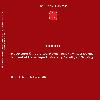Preservice Elemantary Mathematics Teachers' Level of Relating Mathematical Concepts in Daily Life Contexts
İlköğretim Matematik Öğretmeni Adaylarının Matematiği Günlük Yaşamla İlişkilendirme Düzeyleri
___
- Adler, J., (1998). Lights and limits: Recontextualising Lave and Wenger to theorise knowledge of teaching and of learning school mathematics. In Watson, A. (Ed.) Situated Cognition and the Learning of Mathematics. Centre for Mathematics Education Research. University of Oxford, Department of Educational Studies. Oxford. 161-177.
- Aşkar, P. & Umay, A. (2001). Preservice elementary mathematics teachers’ computer self-efficacy, attitudes towards computers, and their perceptions of computer-enriched learning environments. In C. Crawford et al. (Eds.), Proceedings of Society for Information Technology and Teacher Education International Conference 2001 (pp. 2262-2263). Chesapeake, VA: AACE.
- Bandura, A. (1977). Self-efficacy: Toward a unifying theory of behavioral change. Psychological Review. 84, 191-215.
- Barab, S. A., (1999). "Ecologizing" instruction through integrated units, Middle School Journal, 30, 21-28.
- Brown, J. S., Collins, A., & Duguid, P., (1989). Situated cognition and the culture of learning. Educational Researcher, 18,1,32-42.
- Carraher-Nunes, T., Carraher, D. W., & Schliemann, A. D. (1985). Mathematics in the streets and in schools. British Journal of Developmental Psycholog, 3, 21-29.
- Erturan, D. (2007). 7. sınıf öğrencilerinin sınıf içindeki matematik başarıları ile günlük hayatta matematiği fark edebilmeleri arasındaki ilişki. Yayınlanmamış yüksek lisans tezi. Hacettepe Üniversitesi, Ankara.
- Green, S. B., Salkind, N. J., & Akey, T. M. (2000). Using SPSS for Windows: Analyzing and Understanding Data (2nd edition). Prentice-Hall, Inc.: New Jersey.
- Greeno, J. G. (2004). Situative research relevant to standards for school mathematics. In J. Kilpatrick, W. G. Martin & D. Schifter (Eds.). A Research Companion to Principles and Standards for School Mathematics (pp. 304-333). Reston:NCTM.
- Guberman, S. R. (2004). A comparative study of children’s out-of-school activities and arithmetical achievements. Journal for Research in Mathematics Educatio, 35(2),117-150.
- Hall, M. (2002). A comparative analysis of mathematics self-Efficacy of developmental and non-developmental freshman mathematics students. Presented in Meeting of Louisiana/Mississippi Section of the Mathematics Association of America:USA.
- Herrington, J. & Oliver R., (1999). Using situated learning and multimedia to investigate higher-order thinking. Journal of Educational Multimedia and Hypermedia, 8(4), 401-421.
- Fraenkel J. R. & Wallen, N. E. (1996) How to Design and Evaluate Research in Education (3rd edition), McGraw Hill, Inc.USA.
- Kelly, C. (2001). Creating advocates: Building preservice teachers’ confidence using an integrated, spiral-based, inquiry approach in mathematics and science methods instruction. Action in Teacher Education, 23(3), 75-83.
- Koirala, H. P. & Bowman, J. K., (2003). Preparing middle level preservice teachers to integrate mathematics and science: Problems and possibilities. School Science and Mathematics, 103(3), 145-154.
- Lane, S. (1993). The conceptual framework for the development of a mathematics assessment instrument for QUASAR. Educational Measurement: Issues and Practice 12, 16-23.
- Lave, J. & Wenger, E., (1991). Situated Learning-Legitimate Peripheral Participation. Cambridge University Press, UK.
- Lovery, N. V. (2000). Construction of teacher knowledge in context: Preparing elementary teachers to teach mathematics and science. School Science and Mathematics. 102(2), 69-83.
- Masingila, J. O., Davidenko, S., & Prus-Wisniowska, E. (1996). Mathematics learning and practice in and out of school: A framework for connecting these experiences. Educational Studies in Mathematics, 31, 175-200.
- MEB (2005a). İlköğretim matematik dersi öğretim programı ve kılavuzu (1- 5. Sınıflar). Ankara: Devlet Kitapları Basımevi.
- MEB (2005b). İlköğretim matematik dersi öğretim programı ve kılavuzu (6-8. Sınıflar). Ankara: Devlet Kitapları Basımevi.
- Morris, R. M., (2003). A guide to curricular integration. Phi Delta Kappan, Summer 2003.
- Mousley, J. (2004). An aspect of mathematical understanding: The notion of “connected knowing”. In M. J. Hoines & A. B. Fuglestad (Eds.), Proceedings of the 28th conference of the International Group for the Psychology of Mathematics Education 3,377-384. Bergen, Norway: Bergen University College.
- National Council of Teachers of Mathematics (NCTM) (2000). Principles and Standards for School Mathematics. Reston, VA: NCTM Publications.
- Nunes, T., Schliemann, A., & Carraher, D. (1993). Street Mathematics and School Mathematics. Cambridge University Press: New York.
- Skemp, R. R. (1976). Relational understanding and instrumental understanding. Mathematics Teaching, 77, 20-26.
- Stevens, T., Olivárez, A., Jr., Lan, W., & Tallent-Runnels, M.K. (2004). The role of mathematics self-efficacy and motivation in mathematics performance: Issues across ethnicity. Journal of Educational Research, 97, 208-221.
- Tirosh, D. (2000). Enhancing prospective teachers’ knowledge of children’s conceptions: The case of division of fractions. Journal for Research in Mathematics Education, 31(1),5-25.
- Umay, A. (2001). İlköğretim matematik öğretmenliği programının matematiğe karşı özyeterlik algısına etkisi. Journal of Qafqaz University, 8.
- Yenilmez, K. ve Uysal, E. (2007). İlköğretim öğrencilerinin matematiksel kavram ve sembolleri günlük hayatla ilişkilendirme düzeyi. Ondokuz Mayıs Üniversitesi Eğitim Fakültesi Dergisi. 24, 89-98.
- Wiggins, G., (1990). The case for authentic assessment. Practical Assessment, Research & Evaluation, 2,2.
- Wiggins, G. & McTighe, J., (1998). Understanding by design. New Jersey: Merril Prentice Hall.
- Yayın Aralığı: 4
- Başlangıç: 1986
- Yayıncı: Hacettepe Üniversitesi Eğitim Fakültesi Dekanlığı
Değerlendirme Tercihleri Ölçeğinin Türkçeye Uyarlanması
Yasemin GÜLBAHAR, Şener BÜYÜKÖZTÜRK
Yargıcı Kararlarına Dayalı Ölçekleme Yöntemlerinin Karşılaştırılması Üzerine Ampirik Bir Çalışma
Yükseköğretimin Toplumsal Değişmeye Etkisi
Aslıhan KUYUMCU, Tolga ERDOĞAN
Preservice Teachers' Knowledge of Students' Cognitive Processes About the Division of Fraktions
Mine IŞIKSAL, Erdinç ÇAKIROĞLU
Bilgisayar Cebiri Sistemlerinin Matematiğe Yönelik Tutuma Etkisi
Reliability of Portfolio: A Closer Look at Findings from Recent Publications
Michael SCHALLIES, Özge OSKAY ÖZYALÇIN
Comparing Teachers' Beliefs About Mathematics in Terms of Their Branches and Gender
Öğretmen Adaylarının Sınıf Yönetimi Stratejilerine Yönelik Görüşleri
Yücel KAYABAŞI, Leyla ERCAN, Melek ÇAKMAK
Minimum Sample Size for Cronbach's Coefficient Alpha: A Monte-Carlo Study
